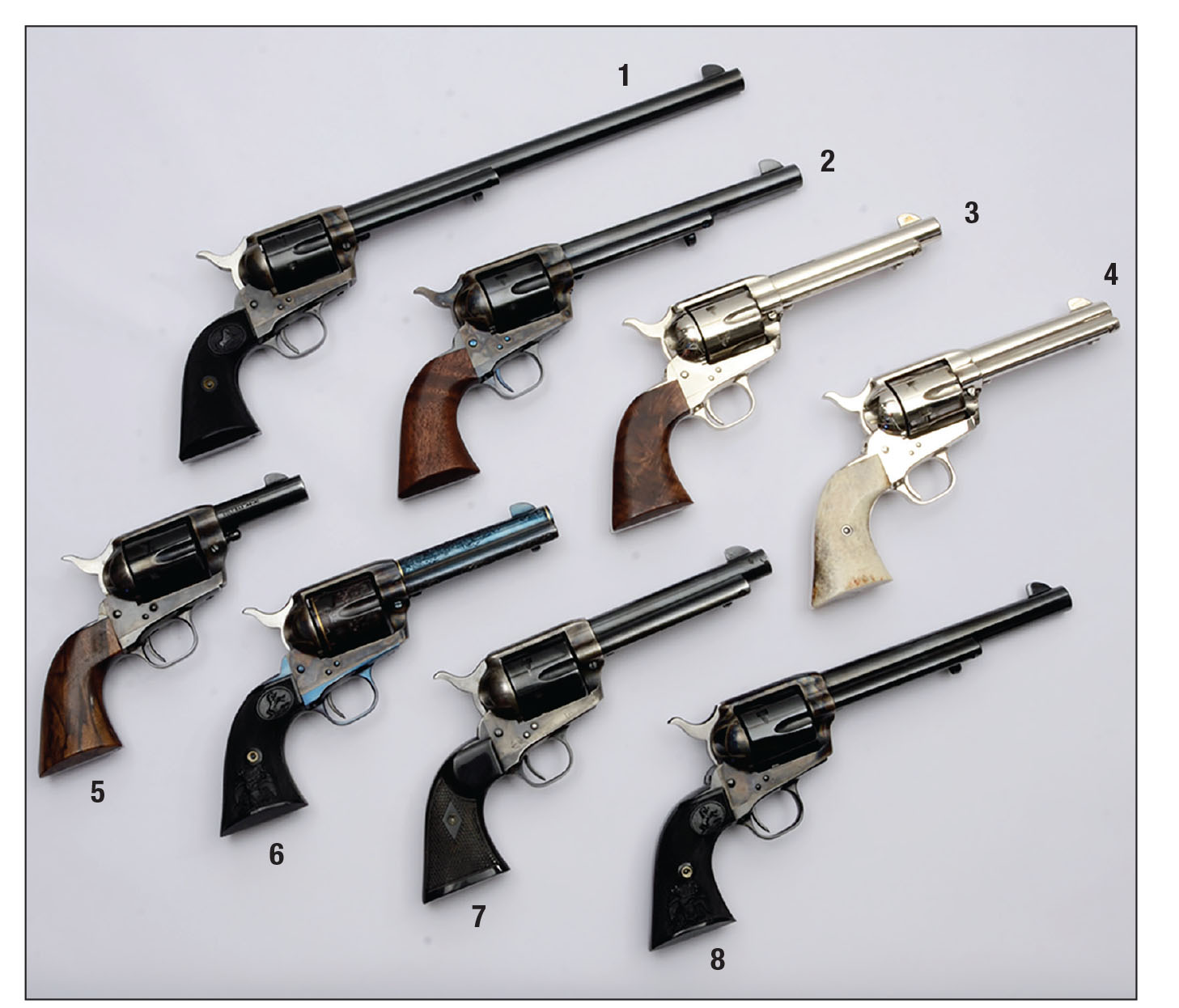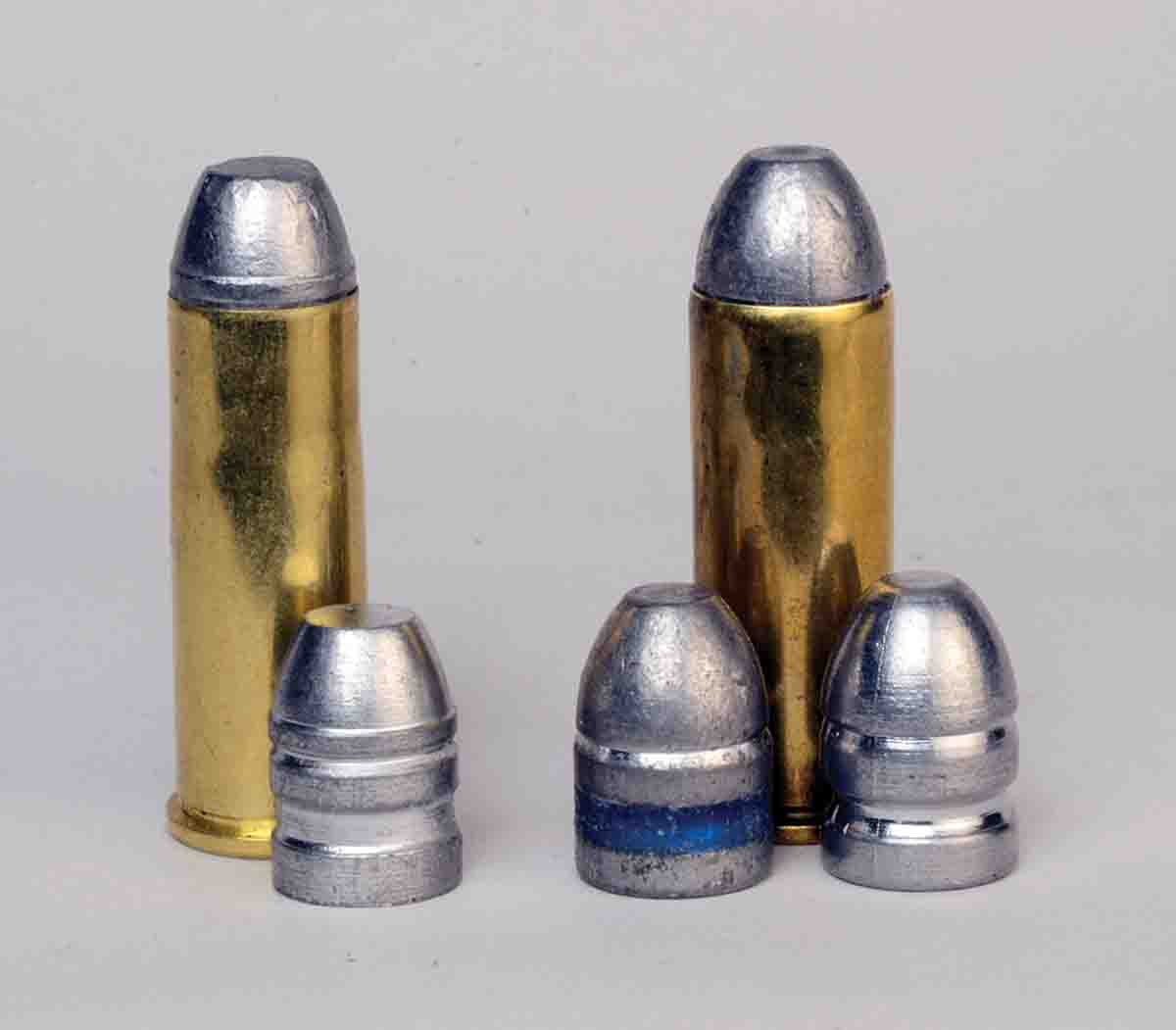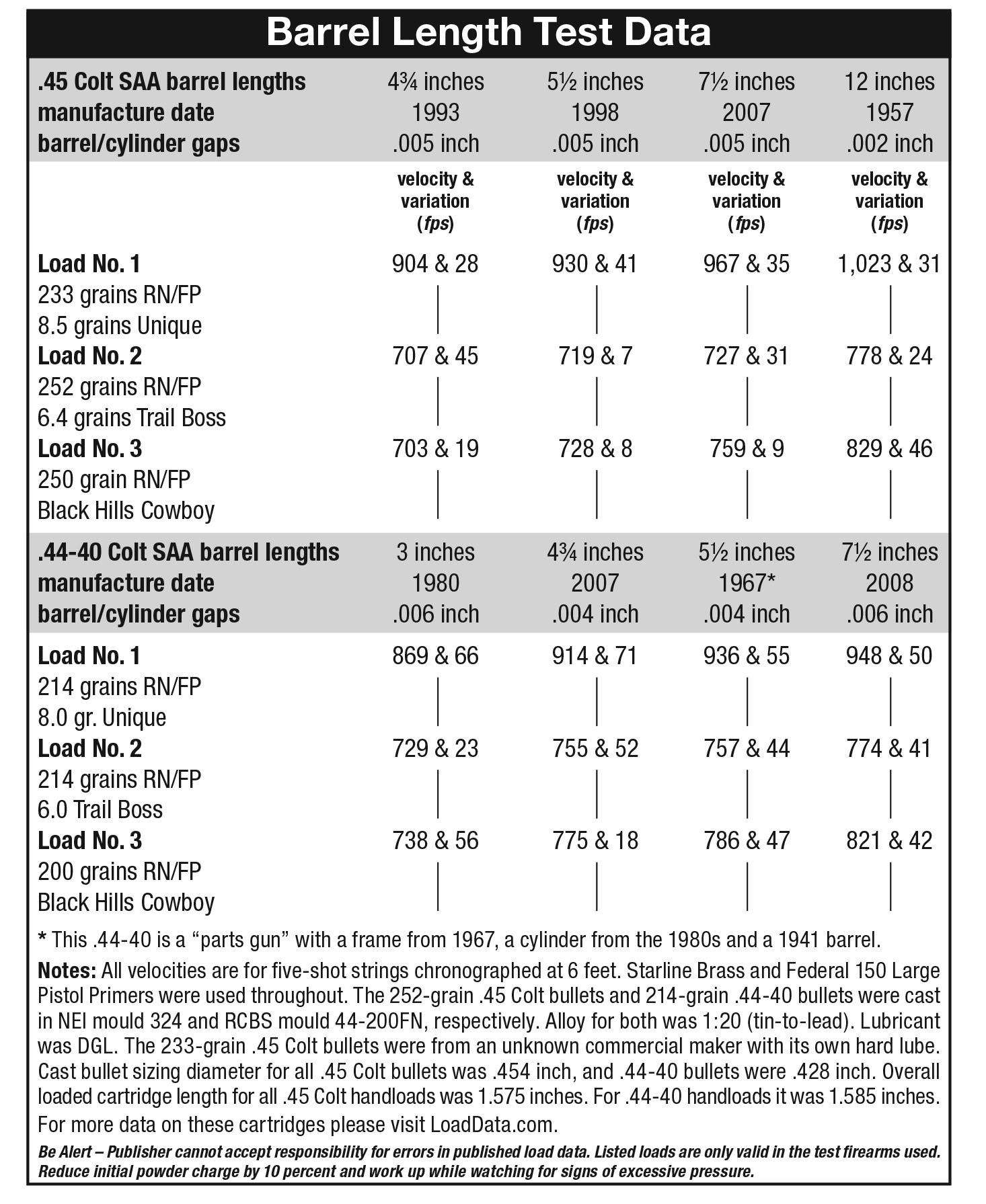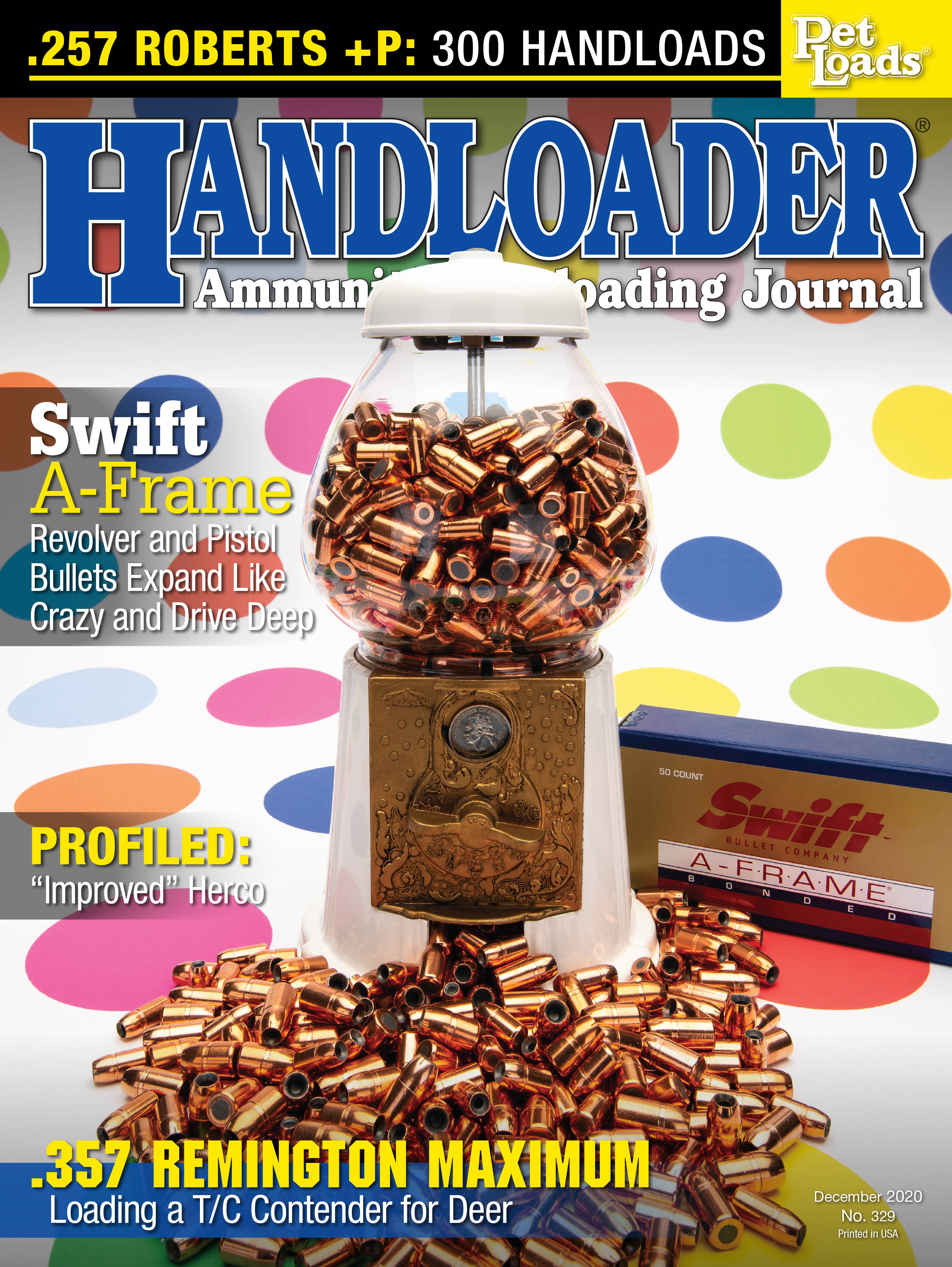Mike's Shootin' Shack
Barrel Length Comparison
column By: Mike Venturino | December, 20

Recently, while sitting and admiring my modest collection of Colt SAAs, the realization struck that I had no less than four each of .44-40s and .45 Colts with different barrel lengths. And that gave me the inspiration to shoot each set of four single actions on the same day, under the same conditions with identical handloads. Naturally, this sort of informal “test” would prove nothing in the big picture, but it would satisfy my own curiosity.
The Colt SAA .45s to be used had 4¾-, 5½-, 7½- and 12-inch barrel lengths. The three shorter lengths were all of Third Generation production. The 12-inch barreled “Buntline” was of Second Generation. In the .44-40 group, the 3-, 4¾- and 7½-inch barrel lengths were again all Third Generation. The one with a 5½-inch barrel was a “mixmaster” consisting of a Second Generation frame and grip frame, a First Generation .44-40 barrel with a Third Generation .44-40 cylinder.
In an exercise such as this, there are numerous uncontrollable variables. Manufacturing tolerances are one, and minor dimensional changes are another. For instance, as measured by pin gauges, .44-40 chamber mouth diameters on the 3- and 5½-inch “test” guns are .431 inch. The 4¾-inch .44-40’s six chamber mouths are all .428 inch while the 7½-inch .44’s chamber mouths are four at .429 inch and two at .428 inch. Slugging all four of the .44-40’s barrel groove diameters resulted in slugs a bit over .426 inch and a bit less than .427 inch.

With the .45 Colts, all barrels slugged uniformly at .451 inch. Chamber mouth diameters with the 5½-inch sample showed four at .455 inch and two at .453 inch. The 4¾-inch .45 had one chamber mouth measuring .454 inch, and the other five were .455 inch.
Forcing cones are another variable. Of the eight revolvers, two had forcing cones cut with 11-degree reamers. Those were the 5½- and 7½-inch .45s. The other six revolvers’ forcing cones were factory issue. A dimension that is easily measured and certain to affect velocities is barrel/cylinder gap. With the .45s, all had .005-inch gaps except the 12-inch Buntline. Its gap was a tight .002 inch. The shortest and longest .44-40s had .006-inch gaps and the two in between were .004 inch.
These Colts have been with me a great range of years. I had the “mixmaster” .44-40 put together 42 years ago, and the 7½-inch .44-40 was bought only a few weeks prior to this writing. The history of the 5½-inch .45 is interesting. While working for another magazine in the late 1990s, the editor insisted I do a “torture test” comparing brand new Colt SAA and Ruger New Model Blackhawk .45s. Each sixgun was used to shoot 5,000 rounds using Black Hills Cowboy factory loads. Noteworthy about both revolvers’ quality and the effectiveness of torture tests is that neither suffered the slightest problem.

The same .44-40 bullets were used in both handloads. They were cast in RCBS mould 44-200FN. Using a 1:20 alloy, they weighed 214 grains. Powder charges were 8.0 grains of Unique and 6.0 grains of Trail Boss. These bullets were sized .428 inch and again were lubed with DGL.
Of course, powder burning rate is a consideration in comparing revolver barrel length velocities. That is my reason for using Trail Boss and Unique. The former is a very fast burning propellant, and the latter is more toward the middle in burn rate of commonly used handgun powders. Take note from the load table figures of the following facts. With the .45 Colt, the Trail Boss handload provided only a 71-fps gain in velocity from 4¾- to 12-inch barrel lengths. With the .44-40s from 3- to 7½-inch barrels velocity increased only 45 fps.
However, Unique powder gave more noteworthy changes. Gaining 7¼ inches of barrel with .45s resulted in 119 fps higher velocity. With the .44-40s, increasing barrel lengths 4½ inches increased velocity by 79 fps. Here’s an interesting .45 Colt comparison when dropping out the 12-inch Buntline. The other three .45s all had .005-inch barrel/cylinder gaps. With Trail Boss powder, velocity jumped a mere 20 fps from the 4¾-inch barrel to the 7½-inch barrel. However, with Unique in the same three revolvers the velocity gain was 63 fps.
As stated, there were no great surprises in this little exercise, but it did satisfy my curiosity. Perusing the residents of my gun vault turned up four .38-40 SAAs of differing barrel lengths and three S&W .38 Specials with barrels ranging from 17⁄8 to 6½ inches. Those might be worth comparing someday.


